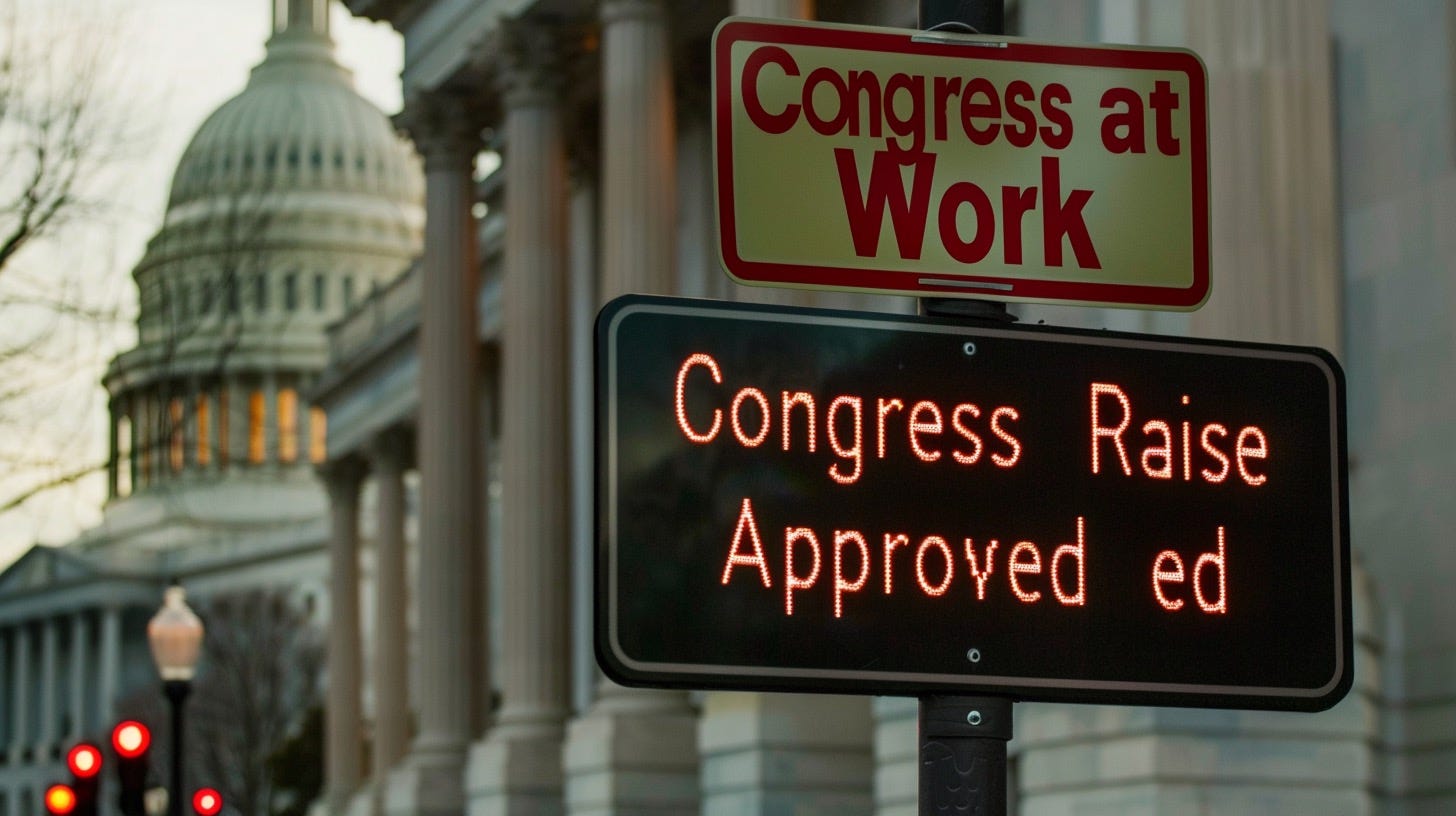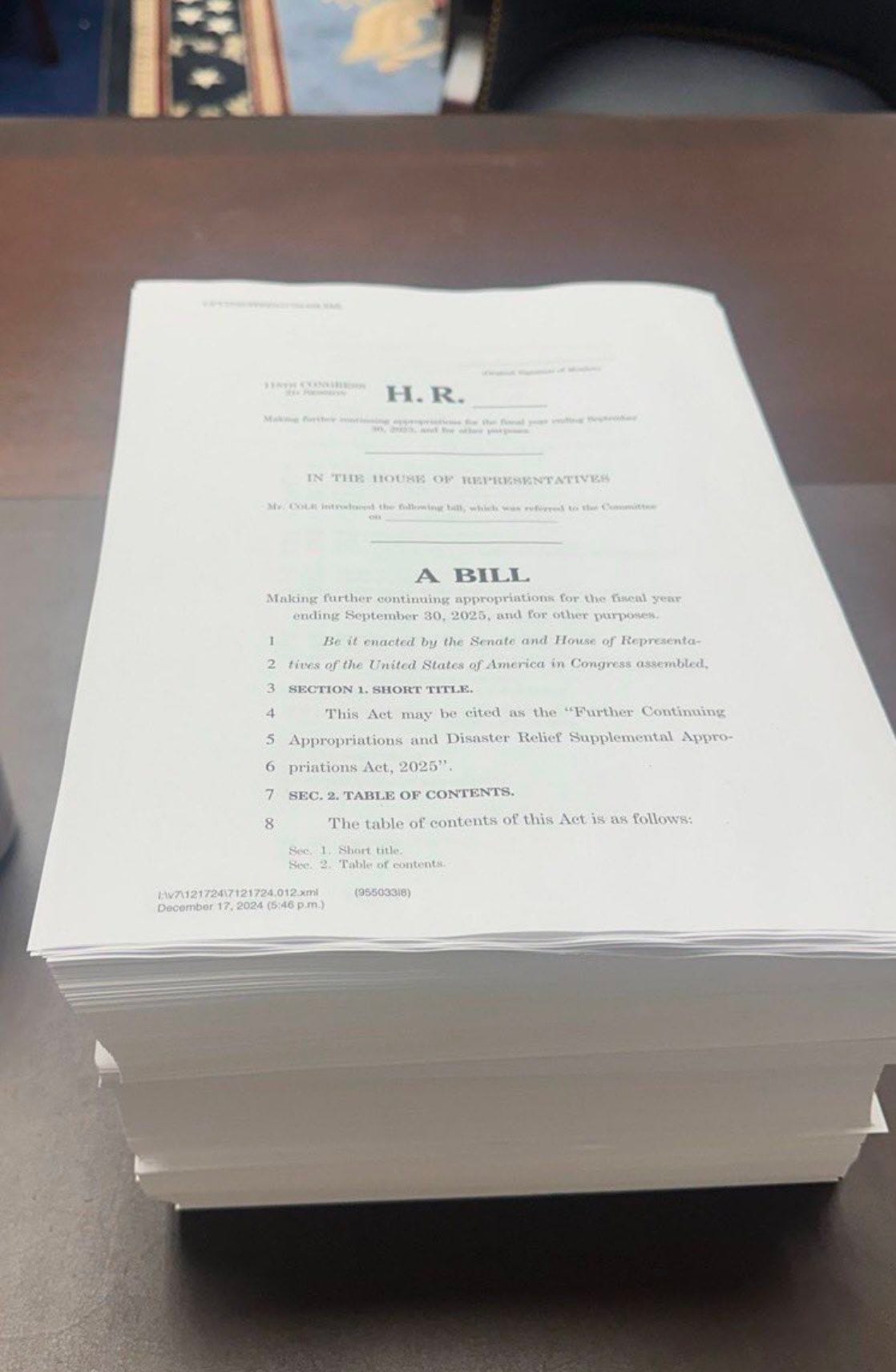Outrageous, Sneaky, and Tone-Deaf: The Truth About Congress’s Latest Spending Bill
From surprise pay raises to funding a stadium, this bill proves Washington hasn’t learned a thing.
It’s happening again. Congress is racing to push through a bloated, 1,500-page spending bill, and—surprise—it’s packed with provisions that scream self-interest and reckless spending. While lawmakers pat themselves on the back for avoiding a government shutdown, they’re hoping you won’t notice the shameless giveaways buried in the fine print.
The rushed process, laughable lack of transparency, and outright audacity of some of the bill’s provisions are a slap in the face to every American still struggling to make ends meet. Let’s break down the most egregious parts of this disaster.
A Congressional Pay Raise: Rewarding Themselves for What?
At the top of the list is a jaw-dropping 38% pay raise for members of Congress. That’s right: while you’re stretching every dollar at the grocery store, lawmakers are padding their salaries to a cushy $180,600 a year.
This is their first pay bump in over a decade, but timing is everything, and this timing couldn’t be worse. Many Americans view Congress as the least productive, most dysfunctional branch of government. And now, in the middle of an economic crunch, they think they deserve a raise?
One critic summed it up best:
“Rewarding incompetence and gridlock with a pay raise? This is Washington in a nutshell.”
Unrelated Add-Ons: A Stadium in a Spending Bill?
The bill is supposed to fund the government and provide disaster relief—but, of course, it’s stuffed with unrelated garbage.
Take the allocation of funds for a Washington Commanders football stadium. Yes, a stadium. Apparently, building a new sports arena is now considered essential government business. Meanwhile, lawmakers have tossed in healthcare reforms and foreign investment policy changes—topics far too complex to be buried in a spending bill with no proper debate.
This kind of legislative hijacking has become standard practice: sneak in controversial provisions, knowing full well they wouldn’t pass on their own merits.
$100 Billion in Emergency Spending—No Strings Attached
Then there’s the $100 billion earmarked for disaster relief. On the surface, that seems fine—until you realize Congress didn’t bother to find ways to pay for it. No spending cuts. No revenue increases. Just slap it on the national credit card and hope no one notices.
Fiscal conservatives are furious, and for good reason. It’s not that disaster victims don’t need help—they do. But using their plight as political leverage to ram through unrelated spending is downright cynical.
Rushed and Reckless: A Broken Process
Lawmakers were given just three days to comb through this monstrosity of a bill. Let’s be honest—no one actually read all 1,500 pages.
This is legislative malpractice, plain and simple. Leadership knows that burying controversial provisions in a massive, last-minute bill makes it nearly impossible for anyone to mount a serious opposition. It’s not transparency; it’s a calculated attempt to bypass accountability.
The Pattern of Abuse
This isn’t just a one-off—it’s a pattern. Omnibus bills have become a go-to strategy for Congress, forcing lawmakers into an impossible choice: vote yes and accept the bad with the good, or vote no and risk shutting down the government.
It’s a system designed to fail the American people, and every rushed, opaque, pork-laden bill chips away at what little trust remains in Washington.
The Bottom Line
This latest spending bill is everything Americans hate about Congress: selfish, short-sighted, and utterly tone-deaf. From pay raises for lawmakers to stadium funding disguised as disaster relief, it’s a glaring reminder that Washington doesn’t work for the people—it works for itself.
If we want to stop this madness, we need real reform: transparency, strict limits on unrelated add-ons, and meaningful debate. Until then, we’ll be stuck watching Congress burn through our money while pretending they’re saving the day.





